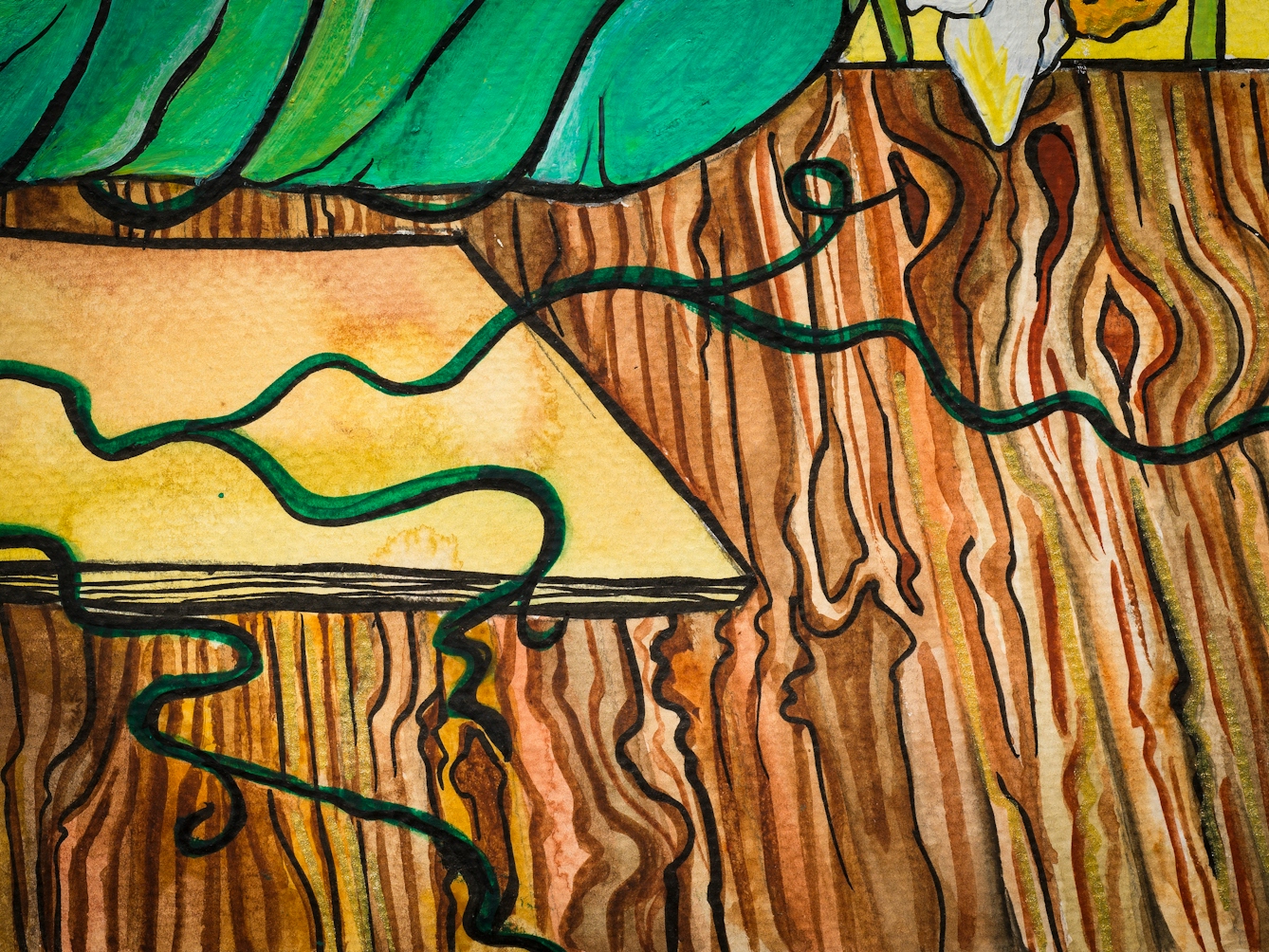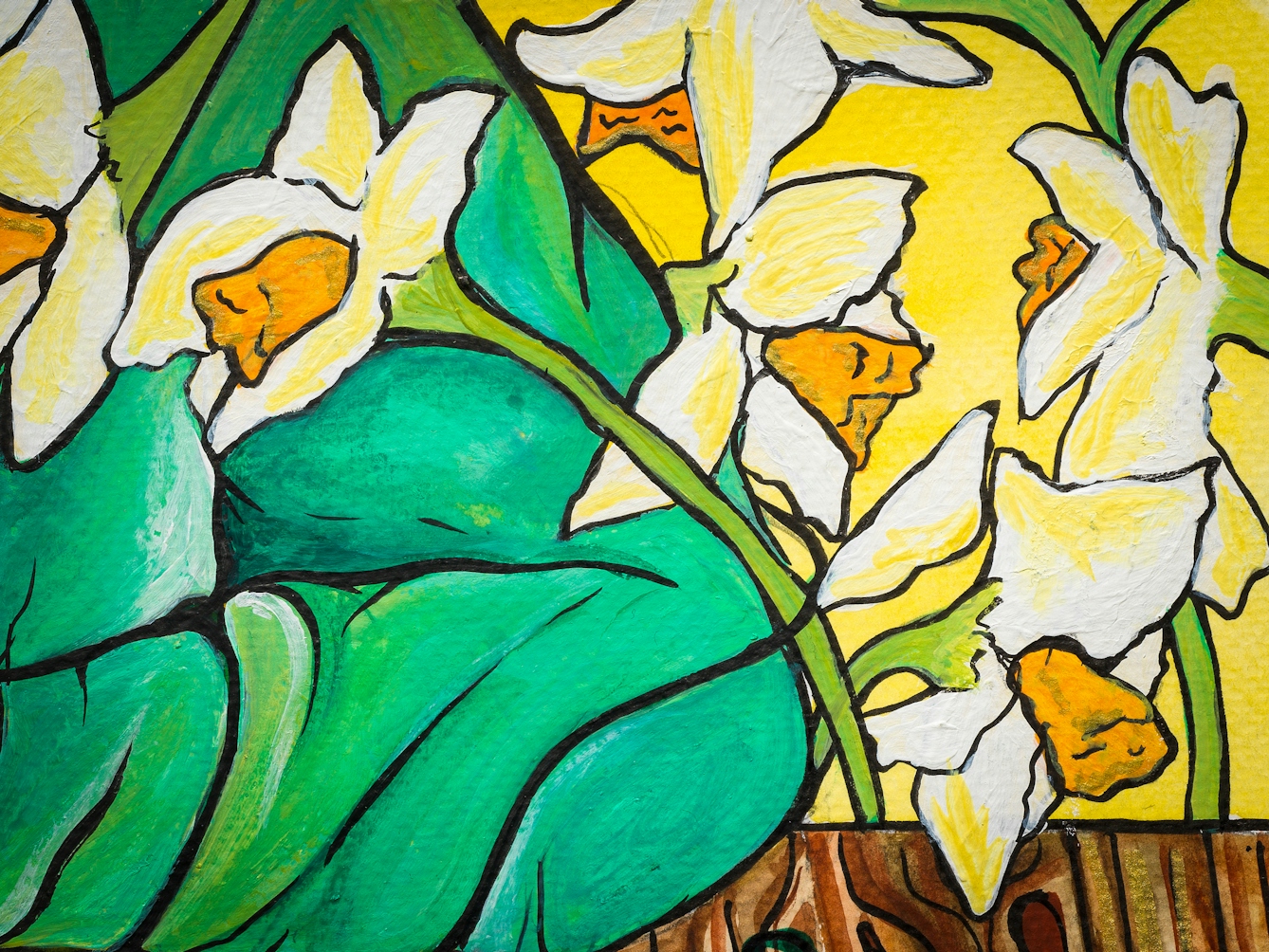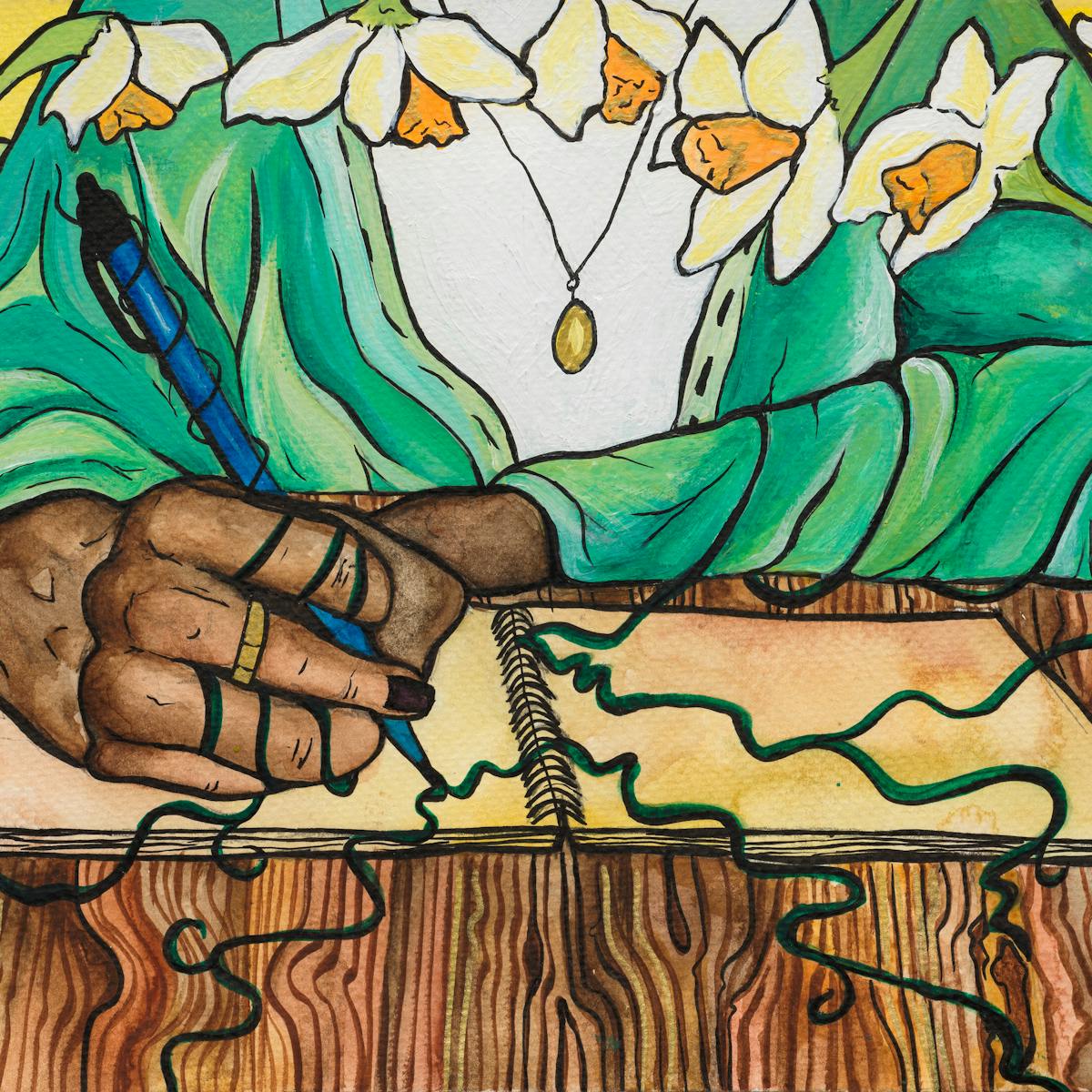Poet Elizabeth-Jane Burnett looks to nature to guide her in breaking the seemingly inescapable call of digital calendars and endless screen time.
In the constant call for presence, any absence is a blessing. Any moment off-screen is a chance to redeem the parts of the self that are lost – revive faint blossoming caught by the frost. As synced calendars smash their way through newborn days, I start scheduling time away.
A symposium of snowdrops. A colloquium of crocuses. I write these plant appointments down, using longhand. They have to shift as calendars twist into ever-evolving configurations. While nature abhors a vacuum, the digital calendar tolerates no room for anything offline; there is no conception of time away from the camera. Yet I exist as a physical thing – I write this down too and colour in the margins of my journal – a diurnal ritual of writing I cling to and sing to.
But offline, in the space of the field, tongue unwinds and teeth unravel, throat melts free and air can travel in any direction it chooses.
Song! A process the body forgets in the endless call to what’s next in the matrix. The throat starts to grow over. The tongue knits strange tapestries of teeth, straining for release. When called to speak online, the mouth finds it can only bleat, padded by boundaries of expected speech. But offline, in the space of the field, tongue unwinds and teeth unravel, throat melts free and air can travel in any direction it chooses. There is music.

“The digital calendar tolerates no room for anything offline. Yet I exist as a physical thing – I write this down too and colour in the margins of my journal.”
I write the agenda for a meeting with the daffodils. In place of ‘Apologies’, ‘Thank Yous’. Minutes from previous meetings aren’t required, since there is trust, and memory needs no further guide. As there is no business, there is no ‘Other Business’. I do not need to circulate an agenda – paperwork is slender. There is a careful stillness where I take my seat, under daffodil petal and leaf, bending my body in new ways to reach.
Beneath the yellow canopy, I am still aware of the calendar’s beam through screen and wall and field, but with each inhalation it grows more distant, I yellow breathe each yellow instant making yellow breath persistent yellow follows yellow twists into a yellow mist of yellow mist of yellow like a yellow fist of yellow fist resist the siren screen resist the tracking beam resist, resist with yellow fists.
Song! A process the body forgets as it re-enters screen-time – as the eyes take over, the throat rolls over. The tongue slicks syrupy around teeth that wear away in automated decay. In the blue light of the camera, my head pulls up on the neck. I try to forget that I would not let a flower feel this. That I would resist. How I had waited four hours for the crocus that would not rise. How I had taken my cue from the sky. No yanking of the head aboard the neck but waiting for the sun to take effect.
While my head is held high like a marionette, my fingers record what I don’t want to forget. Something the crocus has begun. Something about leadership and sun.

“Collect material from the margins of a journal, plant it over the page in spread of vernal voices.”
Appointments with flowers
I make appointments with the buds about to open. Apple and beech, willow and pear, while the hazel catkins are already there, brimming with news about what it is to come to life just at this particular time. I do not know if they know of the human pandemic – no masks in the field, no outward panic, though it is hard to conceal behaviour this manic – there must be seepage, with such quantities of fear, of loss, of denial, of trial, there will be leakage.
All the time I am locked into screen, the hazel sways metres from me. Just the other side of the wall, there are bodies that call from the sway of a branch, living splendidly open to chance.
Song! Under hazel catkins I hear the flush of the air move through bright flower-flare. Pollen drifting, falling, landing. Catkins lifting, calling, leaning into wind in a wordless whispering. This is useful when you have forgotten how to sing. What if every meeting began as a choir, with a warm-up of each voice prior to speech? It would mean listening first and the space to rehearse in wider body, understanding what it is not to conquer somebody but to move and think as a different thing – to be fuller and nimble and open to spring.
I cannot reasonably suggest this, though an essay might reflect it. Collect material from the margins of a journal, plant it over the page in spread of vernal voices. Crocus: rest, in full confidence that internal colour is there; you are not beholden to share any part before you choose to. Orange in white. Invisible flight.

“There is a careful stillness where I take my seat, under daffodil petal and leaf, bending my body in new ways to reach.”
Daffodil: fresh as a yellow sea, relearning how to breathe, filling your armoury, covered in yellow shields. Charge. Heal. Hazel: dangle of sound, reshaping how to speak without mouth, all together, without drowning out the lighter tones, in communication without force, no need to form a response from anything but air – there is space to think here before speaking; there is something else we are reaching for from conversation. It is not domination.
The digital calendar burns for my return and millions like me all logged into screens, unquestioningly. The pandemic has necessitated new ways of working, but these – say unfreshened skin, say stiffened limbs, say tethered teeth, say fettered speech, say trampled buds, say forgotten blood – are hurting. Instead of new ways to continue old conversations, might we not look for new ways to speak? Might now be the moment to seek:
The practice of plant leadership
- When scheduling a meeting, wait for the sun.
- When scheduling a meeting, be sure you need one.
- Keep paperwork slender, shelve agenda.
- Assume all are trusted senders.
- Make reasonable adjustments for those who wish to speak in hazel.
- Recognise that leadership, like language, is unstable.
- Where there is no business, there is no ‘Other Business’.
- Could the last item be: Any other kinship?
About the contributors
Elizabeth-Jane Burnett
Elizabeth-Jane Burnett is an author and academic whose creative and critical work has a largely environmental focus. Publications include the poetry collections ‘Of Sea’ (2021) and ‘Swims’ (2017), both from Penned in the Margins, nature-writing memoir ‘The Grassling’ (Penguin, 2019) and a monograph, ‘A Social Biography of Contemporary Innovative Poetry Communities: The Gift, the Wager and Poethics’ (Palgrave, 2017). She is a Leverhulme Research Fellow (2021–2), researching ‘Creative Writing and Climate Change: Developing a New Wetlands Literature’ and a nature diarist for Oh magazine and the Guardian.
Maïa Walcott
Maïa is a Social Anthropology undergraduate at the University of Edinburgh and a multidisciplinary artist working with sculpture, painting, illustration and photography. Her work has been widely published and exhibited, appearing in the anthology ‘The Colour of Madness’ and as part of ‘Project Myopia’. Maïa was also the in-house illustrator for the literary magazine The Selkie, and photographer for photo exhibitions such as ‘The I'm Tired Project’ and ‘Celestial Bodies’.


